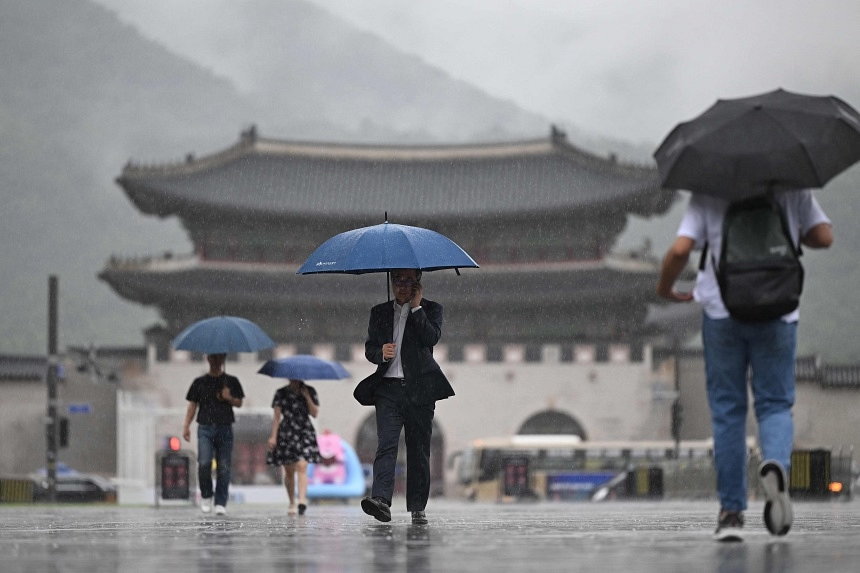Torrential rains in South Korea displace 1,500, cause major damage
SEOUL — Over 1,500 people across South Korea were forced to evacuate during three days of relentless downpours as heavy rain wreaked havoc on homes, roads and infrastructure.
The heavy rain, which lasted from the afternoon of Sept 19 to Sept 21, began from Jeju Island and along the southern coast, before spreading across the country.
Along the southern and western coasts, rain fell at a rate of about 100mm per hour, while the southern regions and North and South Chungcheong provinces saw 50mm to 80mm of rain per hour. The coastal areas of the North and South Gyeongsang provinces and mountainous regions of Jeju Island recorded maximum rainfall exceeding 500mm. The southern regions, Jeju Island, Chungcheong provinces and eastern Gangwon Province saw cumulative rainfall of around 200mm to 300mm, with many areas reaching extreme levels.
READ: South Korea swelters with ‘tropical nights’ record in sight
According to the Central Disaster and Safety Countermeasure Headquarters, as at the morning of Sept 22, 1,501 people from 1,014 households in seven cities and 46 regions had been evacuated. Of those evacuated, 682 people from 455 households were unable to return home and were staying at temporary shelters, with relatives or in community centres.
Article continues after this advertisementThere were no casualties reported, but there was significant damage nationwide. Due to the worsening weather, 77 passenger ships were stranded on 55 sea routes, and 16 flights were cancelled as at the morning of Sept 22. Access to 641 sections of 22 national parks, 39 underpasses, 3,061 riverside areas and 38 roads was also blocked.
Article continues after this advertisementThere were 107 reports of road flooding, 21 cases of soil loss, 170 inundated homes, 26 flooded buildings and one collapse of a retaining wall. In Sasang-gu, Busan, a sinkhole formed on Sept 21, along with other road damage.
READ: Putin offers aid to North Korea to help it cope with flooding
Crops covering approximately 4,116ha were also damaged – an area roughly 14 times the size of the Yeouido financial district in Seoul.
A school of fish appeared on a road in Gohyeon-dong, Geoje, in South Gyeongsang province. As a nearby river overflowed, water flooded residential roads, and fish were seen swimming on the flooded streets.
Part of the Daeseong-dong Tombs in Gimhae, South Gyeongsang, among the Gaya Tumuli listed as a Unesco World Heritage Site, collapsed. The Joman River and Gusan Stream in Gimhae overflowed, forcing the evacuation of around 70 residents.
The heavy rain warning was lifted on the morning of Sept 22, with temperatures ranging from 15 deg C to 24 deg C in the morning, and 20 deg C to 29 deg C in the afternoon. Starting from Sept 23, a significant temperature gap between day and night is expected in inland areas.
